Definition of Polly-beak Nose Deformity
The pollybeak deformity is characterized by a noticeable fullness or convexity in the area just above the nasal tip, where the nasal dorsum meets the supratip region. This results in a prominent and rounded appearance, creating an unnatural profile view of the nose. It can be particularly visible when the nose is viewed in profile or in certain lighting conditions.
The deformity typically occurs due to an excessive or inadequate reduction of the nasal dorsum or bridge during surgery, resulting in an imbalance in the overall nasal profile. It can be caused by various factors, including inadequate removal of cartilage or bone, inadequate support of the nasal tip, excessive scar tissue formation, or insufficient postoperative healing.
The appearance of a pollybeak deformity can vary in severity, ranging from subtle to more pronounced. In some cases, it may be visible immediately after surgery, while in others, it may develop gradually over time as scar tissue forms and remodels. It can occur in both primary (first-time) rhinoplasty procedures and revision surgeries.
Treatment options for pollybeak deformity depend on the specific cause and severity of the condition. Non-surgical interventions may include the use of steroid injections to reduce swelling and inflammation in the supratip area, or the application of taping or splinting to help reshape the nose temporarily.
In more severe cases or when conservative measures are not effective, revision rhinoplasty may be recommended. During revision surgery, the underlying causes of the pollybeak deformity are addressed, which may involve removing excess tissue, reshaping the nasal dorsum, strengthening or adjusting the nasal tip support, or correcting any other contributing factors.
It is important to note that the prevention of pollybeak deformity is a crucial aspect of rhinoplasty surgery. It requires the surgeon to carefully assess the patient's nasal anatomy, plan the procedure accordingly, and achieve a balanced and harmonious nasal contour that complements the individual's facial features.
Overall, the pollybeak deformity is a term used to describe an unwanted aesthetic outcome following nasal surgery, characterized by a prominent convexity in the supratip region. While it can be challenging to address, appropriate surgical techniques, careful planning, and effective communication between the patient and the surgeon can help minimize the risk of developing this deformity and achieve satisfactory nasal aesthetics.
Soft tissue pollybeak deformity
Soft tissue pollybeak deformity is a specific type of aesthetic irregularity that can occur following rhinoplasty or nasal reconstruction procedures. Unlike the traditional pollybeak deformity, which is primarily caused by excessive or inadequate reduction of the nasal dorsum, soft tissue pollybeak deformity is characterized by an excess of soft tissue in the supratip region, resulting in a rounded or full appearance.
Soft tissue pollybeak deformity can arise due to various factors, including inadequate reduction of the supratip area during surgery, incomplete repositioning of the nasal tip cartilages, or excessive scarring and swelling in the supratip region. These factors can lead to an imbalance in the nasal profile, creating the appearance of excess fullness just above the nasal tip.
The deformity is called a "soft tissue" pollybeak because it primarily involves the soft tissue envelope of the nose, rather than the underlying skeletal structure. It typically manifests as a convexity or fullness in the supratip area, which can make the nasal profile appear rounder or less refined than desired. The excessive soft tissue can give the impression of a slight "bulge" or "parrot's beak" appearance.
Treatment options for soft tissue pollybeak deformity depend on the severity and underlying cause of the condition. Non-surgical interventions may include the use of corticosteroid injections to reduce inflammation and swelling in the supratip area, which can help minimize the appearance of the deformity. In some cases, non-surgical interventions alone may be sufficient to improve the appearance of the nose.
However, if the soft tissue pollybeak deformity is more pronounced or persistent, surgical intervention may be necessary. Revision rhinoplasty can be performed to address the excess soft tissue in the supratip region. The surgical approach may involve careful removal or repositioning of the excess soft tissue, reshaping of the nasal tip cartilages, and refining the overall nasal contour.
It is essential for the surgeon to have a comprehensive understanding of the patient's nasal anatomy and aesthetic goals to create a balanced and harmonious nasal appearance. Communication between the patient and the surgeon is crucial in ensuring that the desired outcome is achieved.
Prevention of soft tissue pollybeak deformity involves meticulous surgical technique and planning. Attention should be given to maintaining proper soft tissue support, achieving adequate reduction of the supratip area, and ensuring proper healing and scar formation. Thorough preoperative assessment and realistic expectations are important factors in achieving successful outcomes and minimizing the risk of developing this deformity.
In conclusion, soft tissue pollybeak deformity refers to an aesthetic irregularity characterized by excess soft tissue in the supratip region following rhinoplasty or nasal reconstruction. It can be addressed through non-surgical or surgical interventions, depending on the severity and underlying cause. Careful surgical planning, technique, and communication between the patient and surgeon are essential for achieving optimal nasal aesthetics and minimizing the risk of developing soft tissue pollybeak deformity.
Cartilagineous pollybeak deformity
Cartilaginous pollybeak deformity is a specific type of aesthetic irregularity that can occur following rhinoplasty or nasal reconstruction procedures. Unlike the traditional pollybeak deformity, which primarily involves excess soft tissue in the supratip region, cartilaginous pollybeak deformity is characterized by an excessive prominence of the nasal tip due to inadequate reduction or reshaping of the nasal cartilage.
Cartilaginous pollybeak deformity can arise due to various factors, including insufficient removal or reshaping of the cartilaginous structures in the nasal tip during surgery, inadequate support of the nasal tip, or excessive scar tissue formation. These factors can lead to a lack of proper definition and projection in the nasal tip area, resulting in a rounded, bulbous appearance.
The deformity is referred to as "cartilaginous" because it primarily involves the cartilaginous structures of the nose, such as the lower lateral cartilages. These cartilages contribute to the shape, projection, and definition of the nasal tip. When they are not properly addressed during rhinoplasty, a cartilaginous pollybeak deformity can occur.
The cartilaginous pollybeak deformity is characterized by a fullness or convexity in the supratip area, just above the nasal tip. This can create an unnatural and unbalanced nasal profile, often resembling the shape of a parrot's beak. The excessive prominence of the nasal tip can disrupt the overall aesthetic harmony of the nose and detract from the desired results of the surgery.
Treatment options for cartilaginous pollybeak deformity depend on the severity and underlying cause of the condition. Non-surgical interventions may include the use of corticosteroid injections to reduce inflammation and swelling in the supratip area, which can help minimize the appearance of the deformity. These injections can sometimes improve the contour of the nasal tip and provide temporary relief.
However, if the cartilaginous pollybeak deformity is more pronounced or persistent, surgical intervention may be necessary. Revision rhinoplasty can be performed to address the underlying cartilaginous irregularities. The surgical approach may involve careful reshaping and repositioning of the nasal cartilages to achieve a more balanced and refined nasal tip. In some cases, grafting techniques may be employed to provide additional support and definition to the nasal tip.
Prevention of cartilaginous pollybeak deformity relies on meticulous surgical technique and planning. The surgeon should carefully evaluate the patient's nasal anatomy, determine the appropriate amount of cartilage reduction or reshaping, and ensure proper healing and scar formation. Effective communication between the patient and the surgeon is crucial in understanding the desired aesthetic goals and achieving satisfactory outcomes.
In conclusion, cartilaginous pollybeak deformity is an aesthetic irregularity characterized by excessive prominence of the nasal tip due to inadequate reduction or reshaping of the cartilaginous structures during rhinoplasty. It can be addressed through non-surgical or surgical interventions, depending on the severity and underlying cause. Careful surgical planning, technique, and communication between the patient and surgeon are essential for achieving optimal nasal aesthetics and minimizing the risk of developing cartilaginous pollybeak deformity.
Causes of pollybeak deformity
The pollybeak deformity, also known as a supratip deformity, can occur following rhinoplasty or nasal reconstruction procedures. It is characterized by a noticeable fullness or convexity in the area just above the nasal tip. Several factors can contribute to the development of a pollybeak deformity, including:
Inadequate reduction of the nasal dorsum: If the nasal dorsum (the bridge of the nose) is not adequately reduced during surgery, it can result in an imbalance between the nasal bridge and the supratip area. This can cause the supratip region to appear fuller and more prominent.
Inadequate support of the nasal tip: The nasal tip relies on proper support from the underlying cartilage structures to maintain its shape and projection. If the support is insufficient, it can cause the nasal tip to droop or appear rounded, contributing to the pollybeak deformity.
Excessive scar tissue formation: Following surgery, the body's natural healing process involves the formation of scar tissue. In some cases, excessive scar tissue can develop in the supratip area, leading to a bulging or rounded appearance.
Incomplete healing and remodeling: The healing process after rhinoplasty is complex and can take several months to fully complete. During this time, the nasal tissues undergo remodeling and reorganization. If the healing process is incomplete or disrupted, it can contribute to the development of a pollybeak deformity.
Inadequate nasal tip rotation: The rotation of the nasal tip refers to the angle at which it projects from the face. If the nasal tip is not appropriately rotated or positioned during surgery, it can contribute to an unbalanced nasal profile and the appearance of a pollybeak deformity.
Nasal skin thickness: The thickness of the nasal skin can also play a role in the development of a pollybeak deformity. Thicker skin tends to have less elasticity and may not conform as well to the reshaped nasal structures, resulting in a less defined and more rounded supratip area.
It is worth noting that the risk of developing a pollybeak deformity can be minimized through careful surgical planning, meticulous technique, and effective communication between the patient and the surgeon. By addressing the underlying causes and ensuring proper healing and scar formation, the likelihood of developing a pollybeak deformity can be reduced.
Treatment of pollybeak deformity
The treatment of pollybeak deformity, also known as a supratip deformity, aims to correct the aesthetic irregularity and restore a balanced and natural appearance to the nose. The specific treatment approach depends on the underlying cause and severity of the deformity. Here are some common treatment options:
1. Non-surgical interventions:
- Corticosteroid injections: In cases where the pollybeak deformity is caused by excessive scar tissue or inflammation, corticosteroid injections may be used. These injections can help reduce swelling and inflammation in the supratip area, leading to a more refined nasal contour.
- Taping or splinting: Temporary measures like taping or splinting may be employed to provide external support and encourage proper healing and reshaping of the nose. These methods are often used as adjuncts to other treatments.
2. Revision rhinoplasty:
- Surgical correction: In more severe or persistent cases of pollybeak deformity, revision rhinoplasty may be necessary. This procedure involves surgical intervention to address the underlying causes of the deformity and achieve the desired nasal aesthetics. The specific surgical techniques employed will depend on the individual case.
- Cartilage reshaping and grafting: If the deformity is due to inadequate support or improper shaping of the nasal cartilage, cartilage reshaping and grafting techniques may be utilized. This involves modifying or repositioning the existing cartilage or using additional cartilage grafts to provide support, definition, and proper projection to the nasal tip.
- Scar tissue removal: Excessive scar tissue in the supratip area can contribute to the pollybeak deformity. During revision surgery, the surgeon may remove or reduce the scar tissue to create a smoother and more refined nasal profile.
- Nasal tip refinement: Correcting the pollybeak deformity often involves reshaping and refining the nasal tip. This can be achieved through techniques such as tip suturing, cartilage sculpting, or adjusting the position and rotation of the nasal tip.
It is important to note that the success of treatment for pollybeak deformity depends on several factors, including the surgeon's experience and skill, the patient's individual anatomy, and their realistic expectations. Prior to undergoing treatment, thorough consultation and discussion with a qualified surgeon are crucial to determine the most appropriate approach and expected outcomes.
Recovery from treatment for pollybeak deformity will vary based on the extent of the surgical intervention and the individual's healing process. Patients can expect some swelling, bruising, and discomfort during the initial recovery period. Following the surgeon's post-operative instructions and attending follow-up appointments are essential for optimal healing and achieving the desired results.
In summary, the treatment of pollybeak deformity involves both non-surgical and surgical interventions. Non-surgical options such as corticosteroid injections and taping may be employed in mild cases, while revision rhinoplasty is often necessary for more significant deformities. The specific surgical techniques used will depend on the underlying causes, and the goal is to achieve a balanced and natural nasal profile. Effective communication with a skilled surgeon and realistic expectations are key to successful treatment outcomes.
Pollybeak Deformity Treatment - Revision Nose Job
The patient I shared in the photos (before and 3 weeks after operation) above applied with complaints of nasal deformity and nasal congestion after rhinoplasty surgery at another clinic. The patient's examination revealed the following:
- "pollybeak nose deformity" due to excess in the supratip area and loss of projection in the nasal tip
- 3 cm long mucosal synechia between the inferior turbinate and the septum in the right nasal cavity
- left caudal septal dislocation (anterior septal dislocation - septum deviation)
- Hanging columella
- Extremely wide nasal supratip area
The patient underwent an open technique revision rhinoplasty operation. The following procedures were performed during the procedure:
- Caudal septoplasty was performed
- Intranasal synechiae were cut
- Supratip reduction, two-level subcutaneous dissection and subcutaneous tissue removal
- Caudal septal graft was placed
- Alar cephalic resection was performed (bilaterally) and dome point was changed
- Two-layer cup graft application
- Bilateral spreader graft removal
- Bilateral thin marginal rim graft was placed
When you look the photographs, you can notice the differences before and after the operation.
Complicated Revision Rhinoplasty - Pollybeak Nasal Deformity, Retracted Columella, Drooping Nasal Tip
The patient with the above pre- and post-operative images and videos applied to our clinic stating that he had a rhinoplasty operation at another clinic, that the tip of the nose drooped downwards after the operation and that an appearance similar to a bird's beak appeared. We detected the following problems during the patient's examination:
- asymmetrical nasal tip
- weakened nasal tip cartilage support as a result of caudal septum resection, columellar retraction and drooping at the tip of the nose
- very thick skin structure and thickened skin structure in the supratip-tip area
- excessively reduced nose bridge
Bilevel skin dissection and underskin tissue removal
Warning, the following two images and one video may be disturbing.
The patient underwent an open technique rhinoplasty operation. Bilevel skin dissection and underskin tissue removal were performed on the skin in the supratip and nasal tip areas of the patient's nose. While the patient's supratip region was reduced, the sagging at the tip of the nose was also reduced, and this removed soft tissue was planned for augmentation of the nasal dorsum (see video and photos below). A limited amount of bone reduction was performed on the patient's nasal root with the help of a micromotor. Cartilage grafts placed on the tip of the nose increased the projection of the tip of the nose and increased the support of the nasal tip cartilage. Finally, sutures were placed and the operation was concluded by performing bilateral alar base resection.
How Can Pollybeak Deformity Be Prevented?
Pollybeak deformity can occur as a complication of an operation or during the patient's recovery, and excessive soft tissue production can cause it.
During rhinoplasty, the following should be taken into consideration to prevent Pollybeak deformity:
- excessive dorsal hump resection and excessive reduction of the belt area (excessive skin may be released in the supratip area, excessive soft tissue may be produced)
- in patients with thick and oily skin, subcutaneous dissection and subcutaneous tissue resection in the supratip area may be beneficial (bilevel skin dissection and underskin tissue removal)
- avoiding excessive dead space in the supratip area (this may cause increased soft tissue production in this area)
- especially in patients with oily and oily skin, it may be beneficial for the supratip area to be further back than the tip area and not at the same level
- applying a tight bandage after rhinoplasty, restricting salt and using isotretinoin (roaccutane tb) in patients with very oily skin characteristics may prevent excessive production of fibroadipose tissue.
- weak nasal tip support may cause the nasal tip to rotate downwards and the supratip area to become prominent, resulting in a Pollybeak appearance.
We Performed Revision Nose Aesthetic Surgery for Polly-beak Nose Deformity!
The following problems were found in the examination of the patient, who had previously undergone rhinoplasty in a different clinic and applied with various aesthetic and functional problems evident on the tip of the nose:
- very thick and oily nose tip skin
- pollybeak deformity (soft tissue beak nose deformity)
- asymmetry in the nostrils
- low nasal tip cartilage support
- columellar retraction
- prominent scar tissue at the columellar incision site
We performed an open technical revision rhinoplasty operation for the patient. During the operation, a cartilage graft was placed with the tongue tin groove technique to support the columella. Cap graft was placed, soft tissue excision was made from the supratip region. You can see the images of the patient before and after the operation above and below.
A link group where you can read the articles I prepared about pollybeak deformity on this website >> https://www.ent-istanbul.com/search?q=pollybeak+deformity
Source links >>
- Rhinoplasty Refinements: Addressing the Pollybeak Deformity : Plastic and Reconstructive Surgery (lww.com)
- Transection of Pitanguy’s Midline Ligament to Avoid Supratip Depression in Closed-Approach, Low-Septal-Resection Dorsal Preservation Rhinoplasty | Aesthetic Surgery Journal | Oxford Academic (oup.com)
- Nasal Tip Deformities After Primary Rhinoplasty - ScienceDirect
Murat Enoz, MD, Otorhinolaryngology, Head and Neck Surgeon
Private Office:
Address: İncirli Cad. No:41, Kat:4 (Dilek Patisserie Building), Postal code: 34147, Bakırköy - İstanbul
Appointment Phone: +90 212 561 00 52
Appointment Phone: +90 212 561 00 52
Fax: +90 212 542 74 47





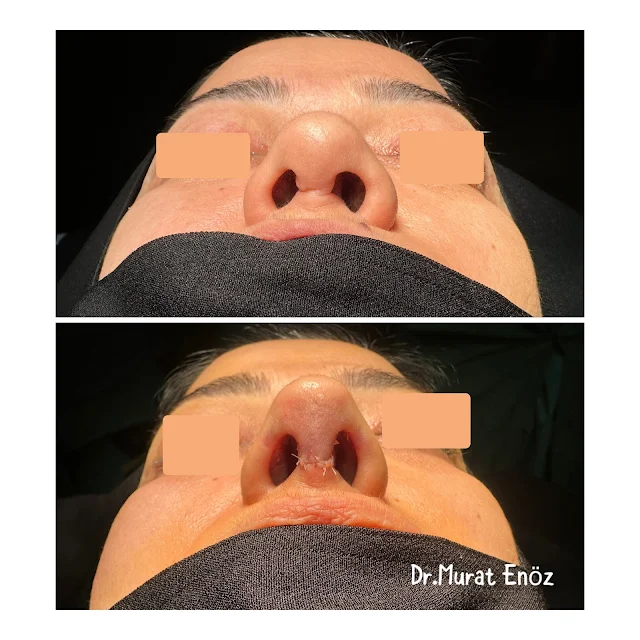


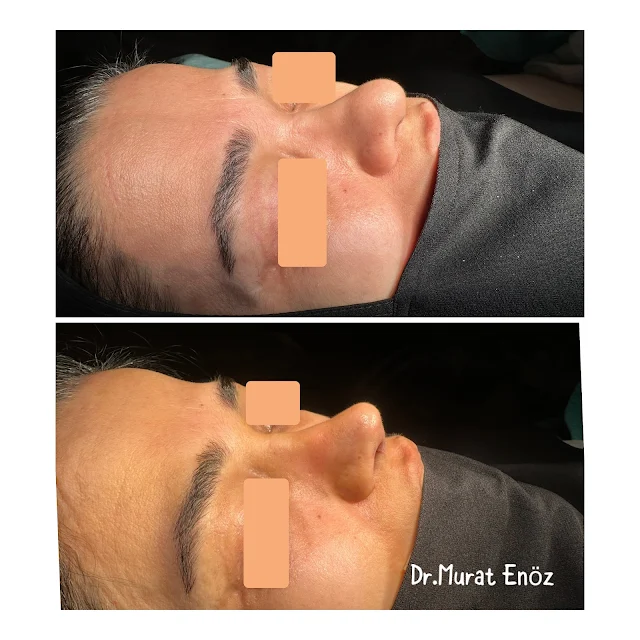





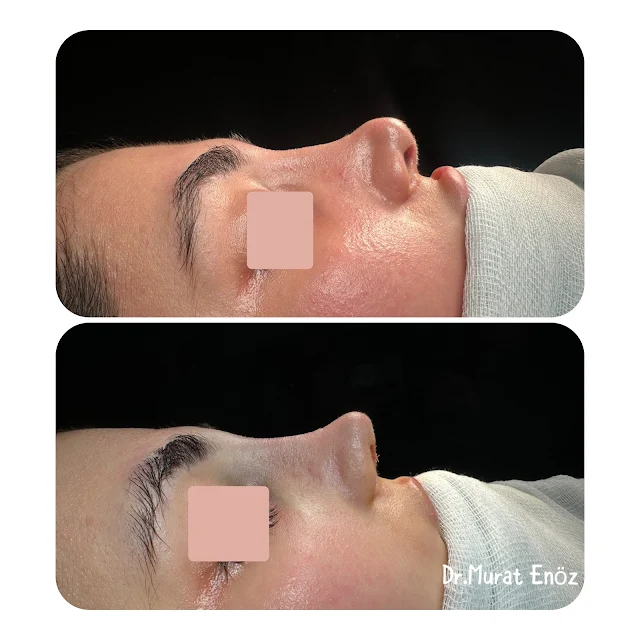




.jpg)
.jpg)
.jpg)
.jpg)
.jpg)
.jpg)



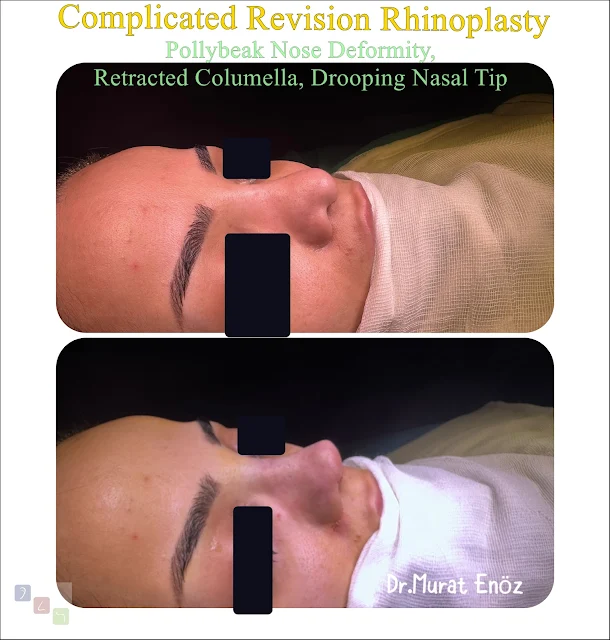

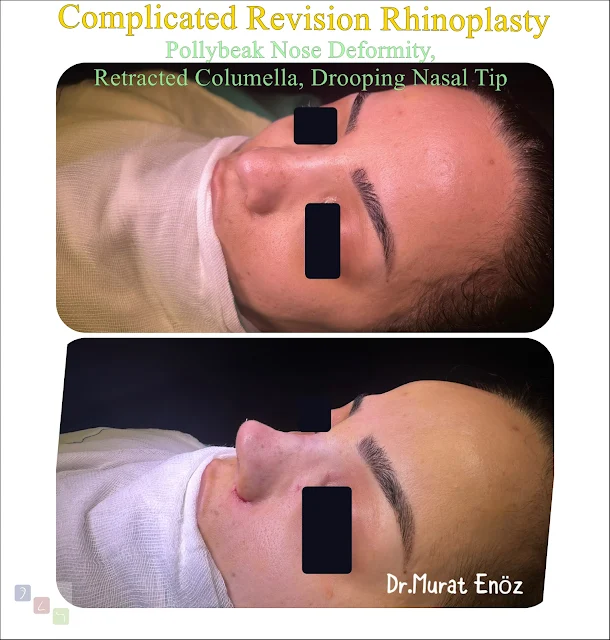



Comments
Post a Comment